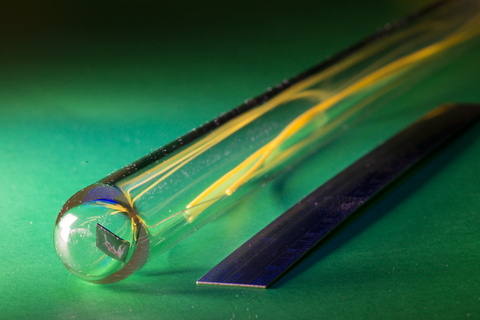Thermodynamics

NIST is developing quantum-based technologies designed to revolutionize measurement of thermodynamic properties by observing their effects on light.
At present, temperature is gauged in terms of electrical resistance, pressure by the weight of a mass of mercury, and vacuum with the number of ions that impact an electrode in a glass envelope vacuum tube. Each method has some disadvantages in both the nature of the instruments used and the accuracy achieved.
The highly miniaturized NIST designs, by contrast, determine each quantity by measuring the ways in which it affects the properties or quantity of light in the system and recording the effects photonically.
Temperature is measured by tracking the way heat changes the wavelengths of light propagating through micro-channels in the material under test. Pressure measurements monitor the way different densities of a gas alter the refractive index (or speed) of a beam of light propagating through the gas. Vacuum is measured by detecting the loss rate of trapped atoms (by measuring the amount of light emitted by remaining trapped fluorescent atoms) as they are removed by collisions with background gas in an evacuated chamber.
Click on the boxes below to explore the technology in more detail.

